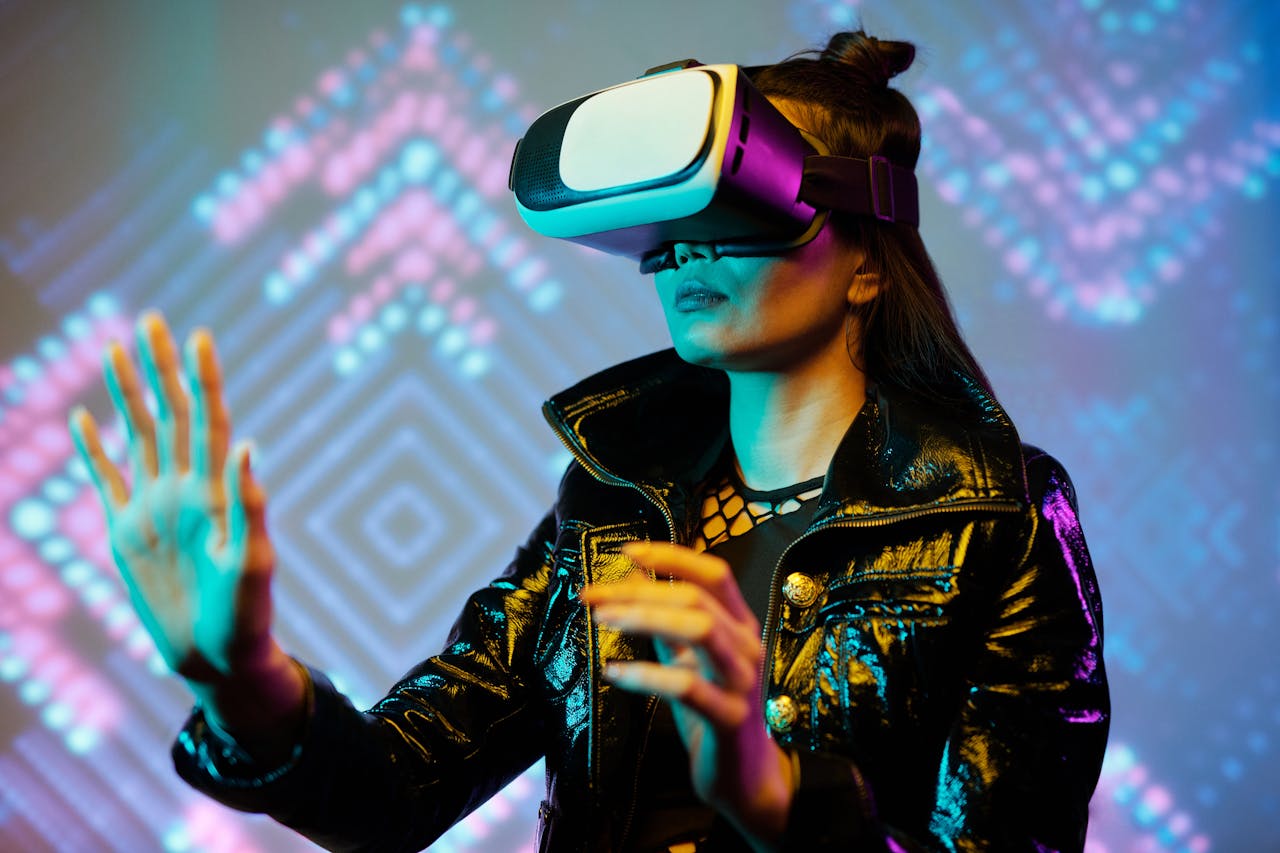
How AI is Shaping VR Experiences
The intersection of Artificial Intelligence (AI) and Virtual Reality (VR) is revolutionizing how we engage with digital environments. AI is making VR smarter, more personalized, and increasingly immersive, creating possibilities that were once confined to science fiction. From adaptive narratives to lifelike interactions, let’s explore how AI is shaping the future of VR experiences.
1. Enhanced Realism in Virtual Worlds
AI-powered algorithms are transforming the realism of VR environments. By simulating natural lighting, physics, and textures, AI ensures that virtual worlds mirror the real world with stunning accuracy. For instance, AI can analyze real-life data to replicate natural phenomena like weather patterns, making VR experiences feel more genuine.
Applications:
• Realistic training simulations for industries like aviation and healthcare.
• Immersive gaming environments that mimic real-world interactions.
• Architectural walkthroughs that feel tangible and accurate.
2. Dynamic & Adaptive Storytelling
AI is enabling VR experiences to adapt in real time to user behavior and choices. This means that every decision you make within a VR experience can alter the storyline, creating a highly personalized journey.
How It Works:
• AI analyzes user preferences and adjusts the narrative dynamically.
• Real-time branching paths create endless story possibilities.
• Developers can design more engaging, replayable content.
Imagine exploring a virtual city where your interactions shape the environment and storyline, offering an experience tailored just for you.
3. Intelligent Non-Playable Characters (NPCs)
AI is revolutionizing the role of NPCs in VR by giving them human-like behavior and intelligence. Unlike static characters with predefined actions, AI-powered NPCs can learn, adapt, and respond based on user inputs, adding depth and immersion.
Features of AI NPCs:
• Realistic dialogue systems powered by natural language processing.
• Behavioral adaptation based on past user interactions.
• Emotion simulation to create lifelike responses.
Whether in VR games or educational simulations, these intelligent NPCs make every interaction meaningful and engaging.
4. Personalized Training & Education
VR has already established itself as a powerful tool for training and education, and AI is taking it to the next level. By assessing a user’s performance, AI can customize VR training modules to suit their learning pace and style.
Industries Leveraging AI in VR Training:
• Healthcare: Surgical simulations that adjust difficulty based on a user’s skill level.
• Corporate Training: Tailored scenarios for employee development.
• Aviation: Realistic flight simulations for pilots with adaptive challenges.
AI ensures that training is not just immersive but also highly effective, maximizing retention and skill development.
5. Increasing Accessibility in VR
AI is making VR more inclusive by enhancing accessibility features. For users with disabilities, AI-powered solutions like real-time sign language interpretation, voice-to-text, and intelligent navigation are breaking down barriers.
Key Advancements:
• Real-time voice recognition for deaf or hard-of-hearing users.
• Gaze-based controls for individuals with mobility challenges.
• AI-driven haptic feedback for a richer sensory experience.
These advancements ensure that VR is a space for everyone, fostering inclusivity and equity in digital realms.
Conclusion:
AI and VR together are not just reshaping entertainment but also redefining how we work, learn, and interact in digital spaces. From hyper-realistic environments to personalized learning experiences, the possibilities are endless. As these technologies evolve, they promise to create a future where virtual and real worlds blend seamlessly, offering experiences that are as transformative as they are immersive.
Stay tuned for more insights as AI and VR continue to innovate the way we connect with technology!

